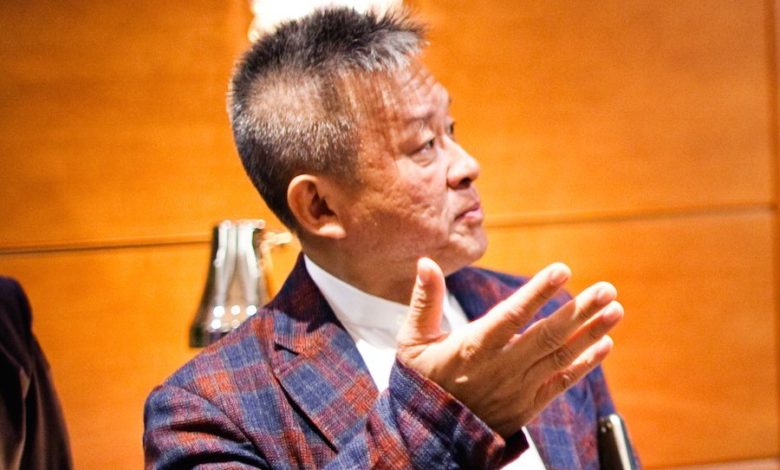Nobu Su: ‘I have the patent for the Google Car of shipping’

Nobu Su, the failed Taiwanese shipowner turned maritime inventor, makes a bold claim in today’s Maritime CEO interview, saying he’s patented what he reckons could become the “Google Car of shipping”.
Since exiting shipowning Su, the boss of Taiwan’s TMT, has focused on inventions as well as fighting a host of court cases relating to his fall from grace as an owner.
OceanNet is Su’s bid to be part of the future of shipping debate raging through the industry at the moment on what the next generation of vessels will look like. Essentially the patented concept uses ship’s antennae to connect vessels across the world, rather than using satellites.
OceanNet, Su claims, enables ship crews to communicate with family and friends, as well as improve safety, security and operational efficiency by allowing ships to transmit critical information to other vessels within a 20 to 30 km range, such as the latest weather conditions or the location of a stranded vessel.
“I have the patent for the Google Car of shipping,” Su tells Maritime CEO, adamant that his invention can be a “game-changer”.
Su has no intention of returning to shipowning any time soon, hinting he might do once a number of his products become adopted by class and at yards.
Another topical solution Su is touting is his ballast water solution, something very different to the array of treatment systems being marketed ahead of new regulations due this September.
Su’s Hybrid Ship system is one of more than 40 patents belonging to the Taiwanese tyoon. It’s a hybrid propulsion system that aims to mitigate marine pollution by reducing the required volume of ballast water by 90%.
Su likens the concept to the Toyota Prius, indeed his version of the ship of the future, he says, is very much like a passenger car.
Su is constantly working on novel concepts for marine hardware, however niche. He even has an idea for how to take out contaminated water from troubled coastal nuclear power plants like Fukushima in Japan. Su’s idea is to use a drillship to drill a horizontal channel underneath the plant and then up into the contaminated area.
The irony may or may not be lost on Su and his dogged pursuit of finding ways to clean up toxic situations.

So – he’s talking about a mesh-network for ships?
Yup — essentially